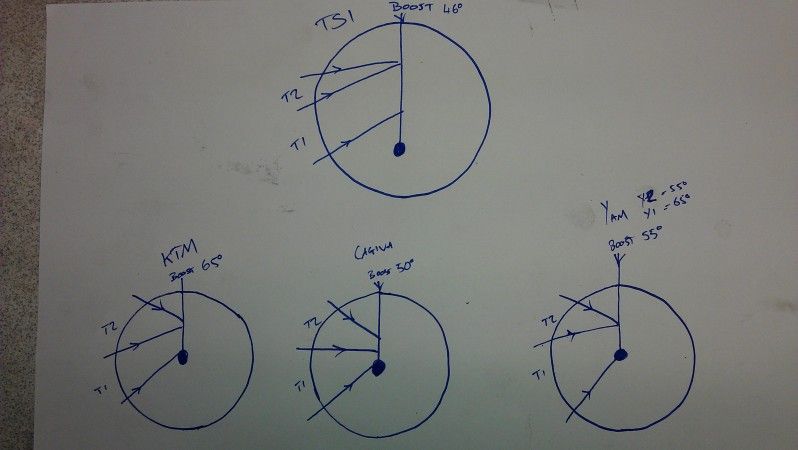The main purpose of the boost port at the back of a schnuerle-loop scavenged reed-valve cylinder is to scoop out the dead exhaust gasses in the cylinder bowl and push/mix the new charge into place. I examined several cylinders today, and they are fall into the traditional category of 50-65 degree angle for the boost port.
The pic below shows the cylinder circumference along with the angle of entry for transfers (T1 & T2). It also shows (the big dot in the middle) the sweet spot where the boost port angle directs the gasses in the cylinder head:

The TS1 cylinder however is angled in at a very low 45-46 degrees. The other cylinders all work off centre plug/squish heads, which essentially means that the boost port will scoop straight up into the bowl and scoop it out nicely....where as the TS1 not only has a very shallow angle of boost port, but also uses an off-set squish/bowl....which means the main flow from the boost port misses the bowl completely. Thus....the main advantage of having a rear boost port is largely diminished.
In the image below i rested a metal shaft into the head resting at the angle of the boost ports direction:

Performance cylinders from big manufacturers come in at much steeper angles:

This suggests that the use of centre squish heads and the redirection of the boost port angle is of benefit when tuning TS1 cylinders.................................
